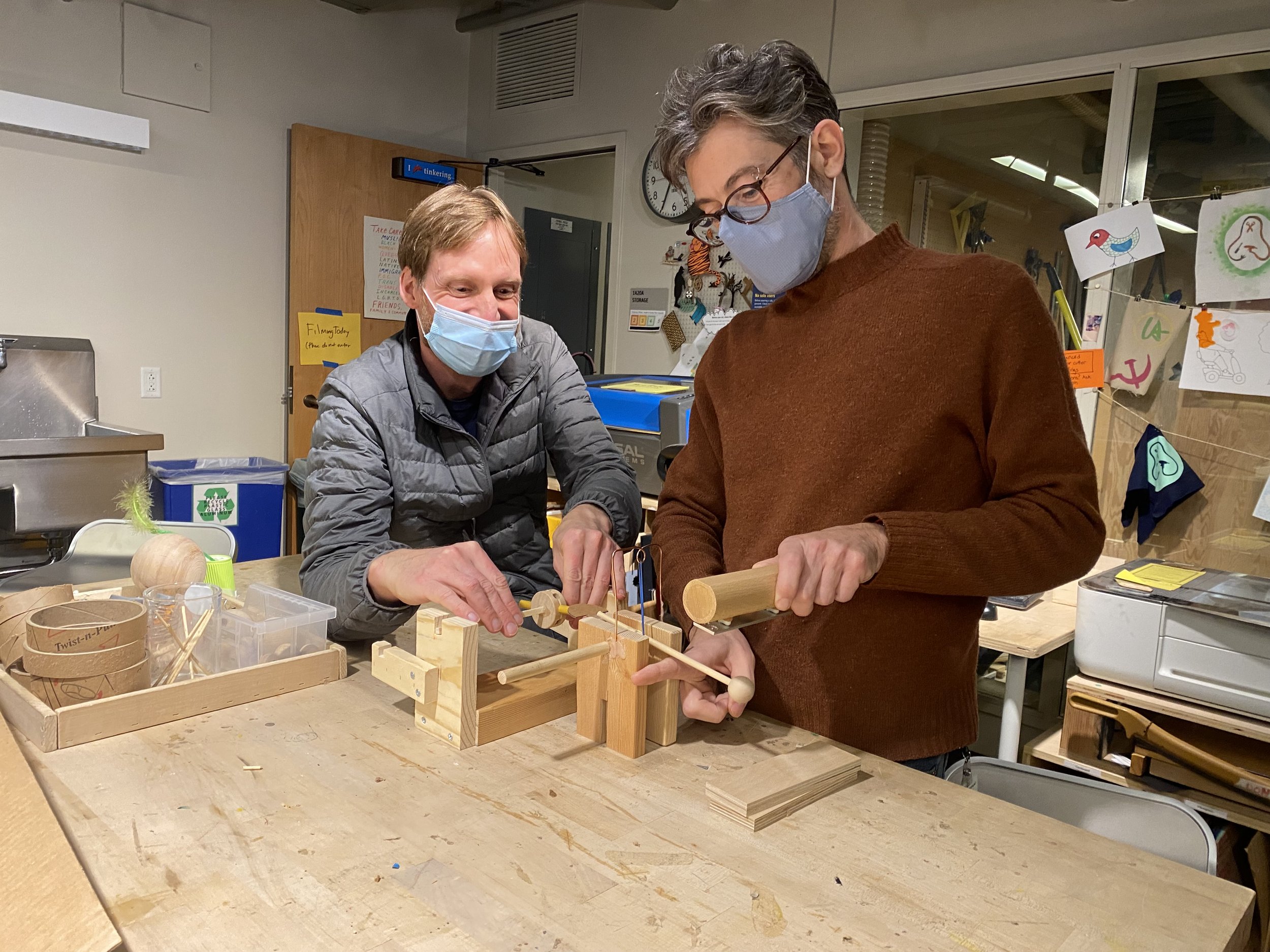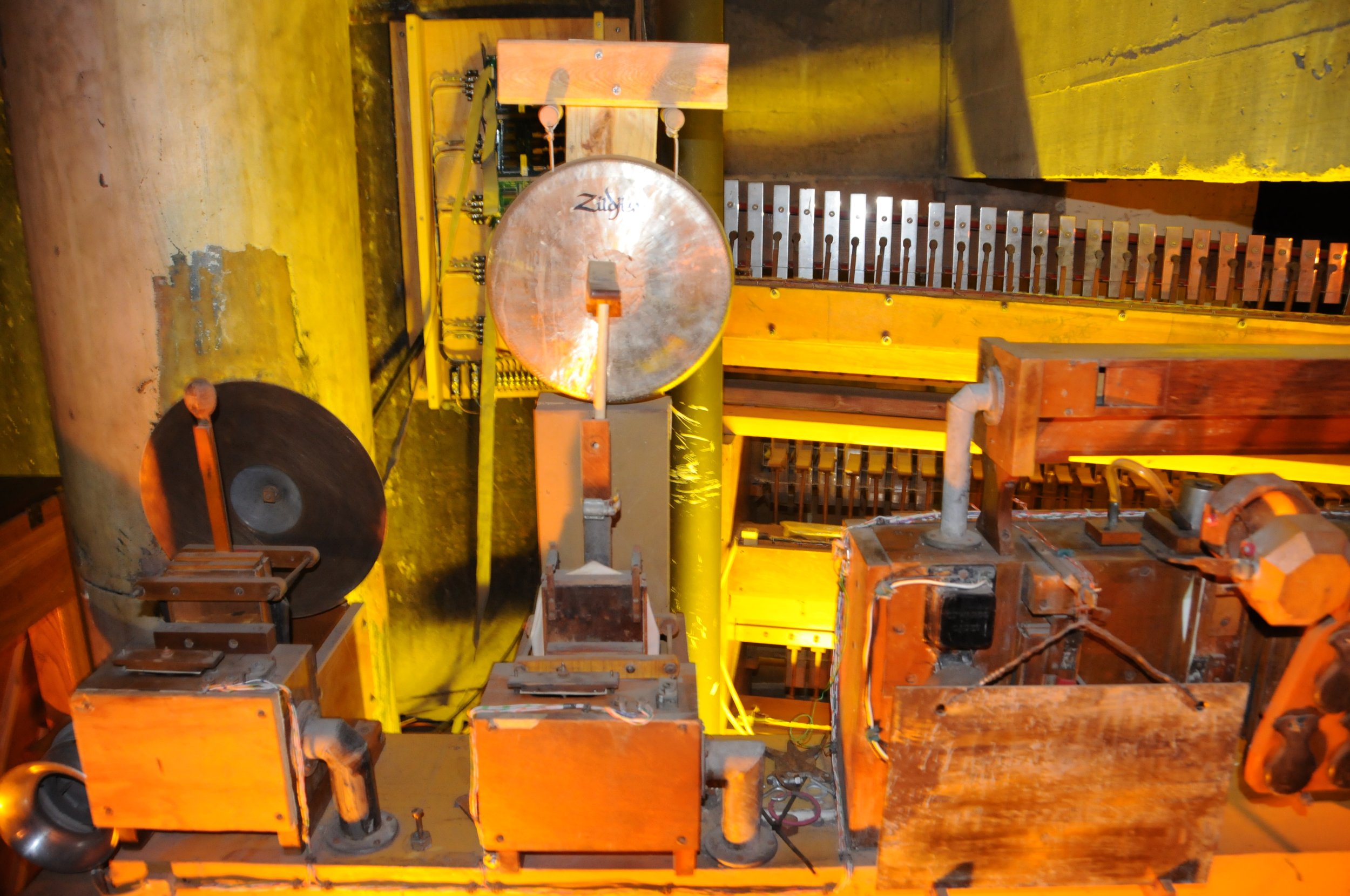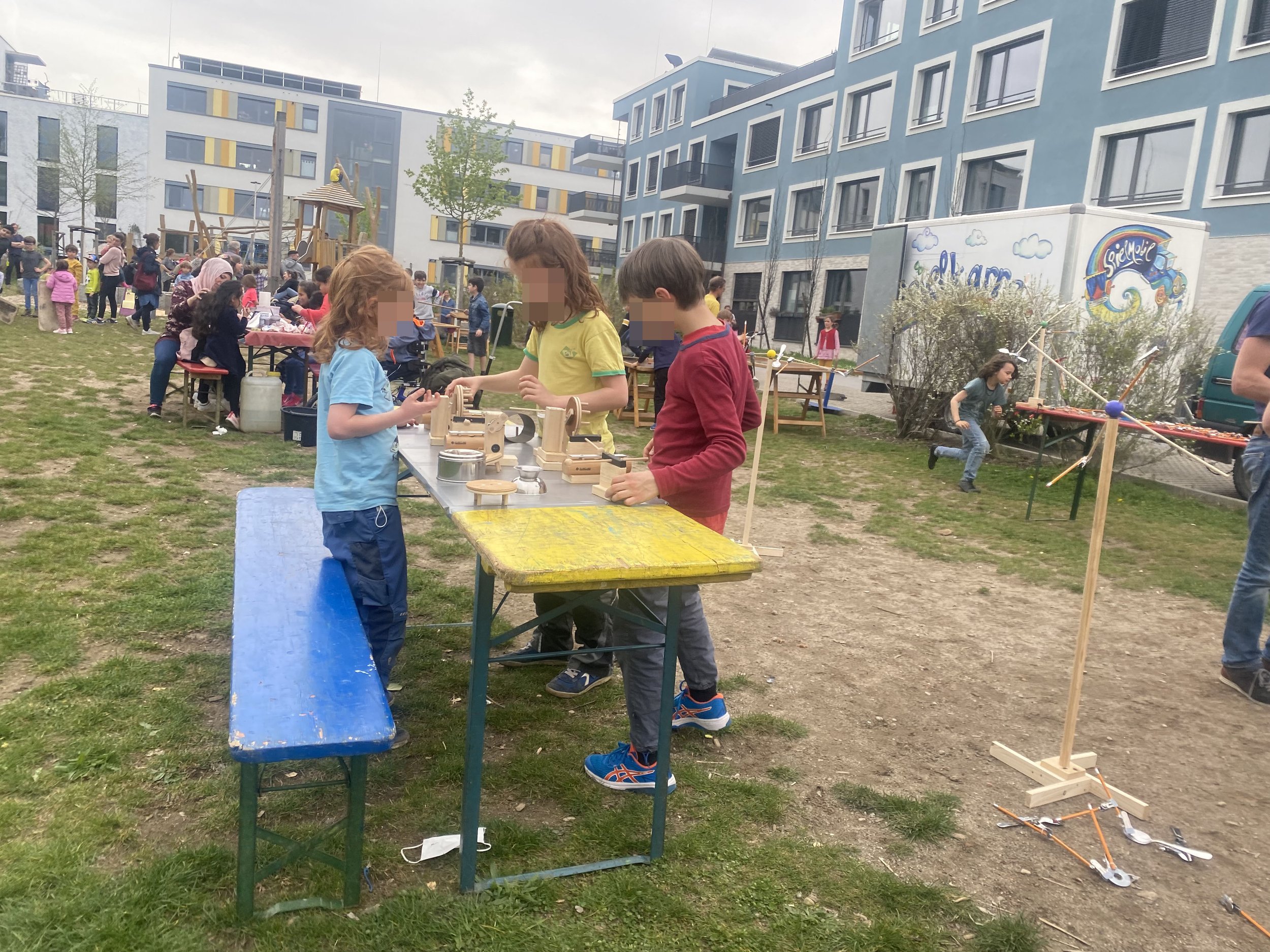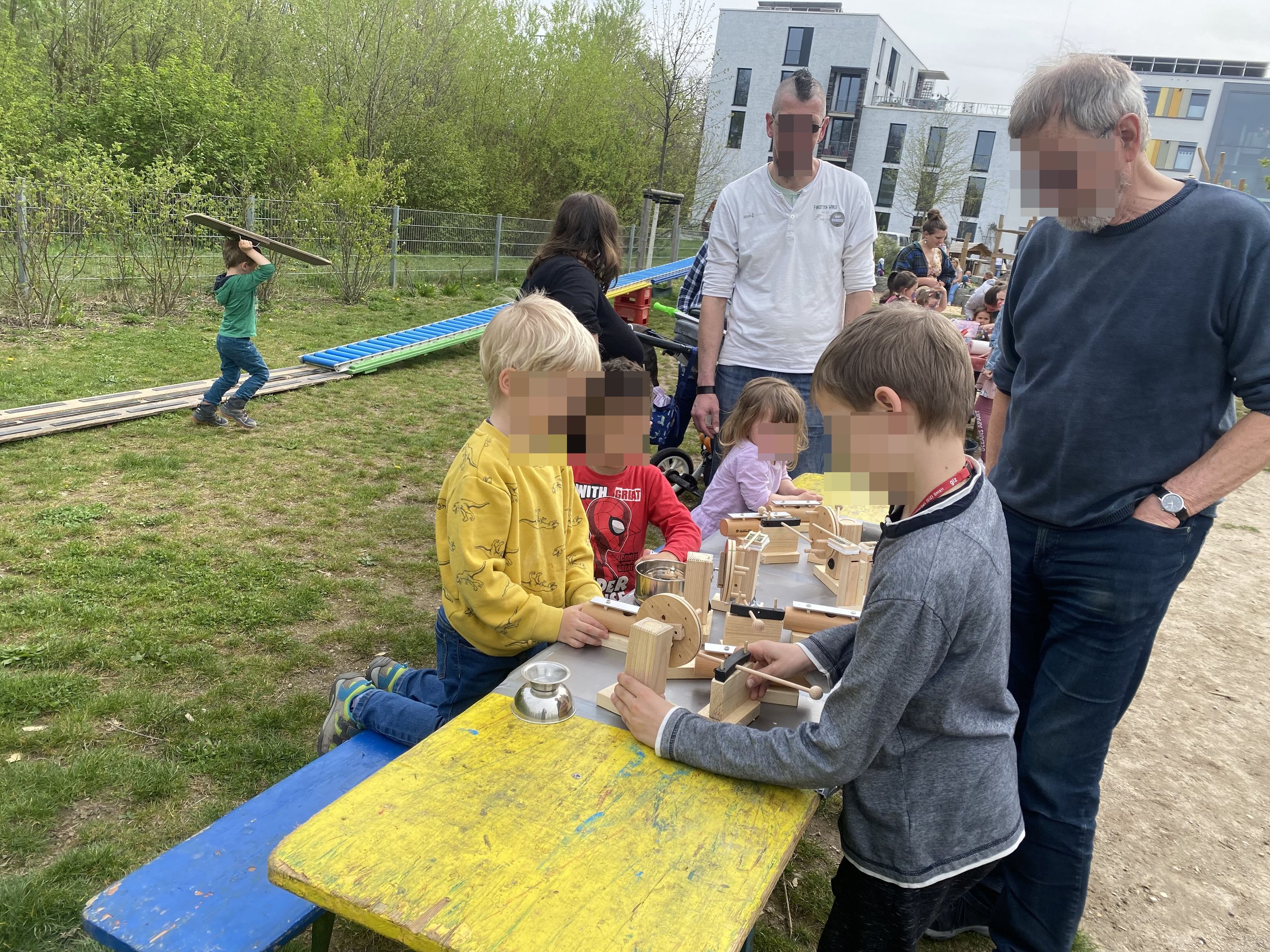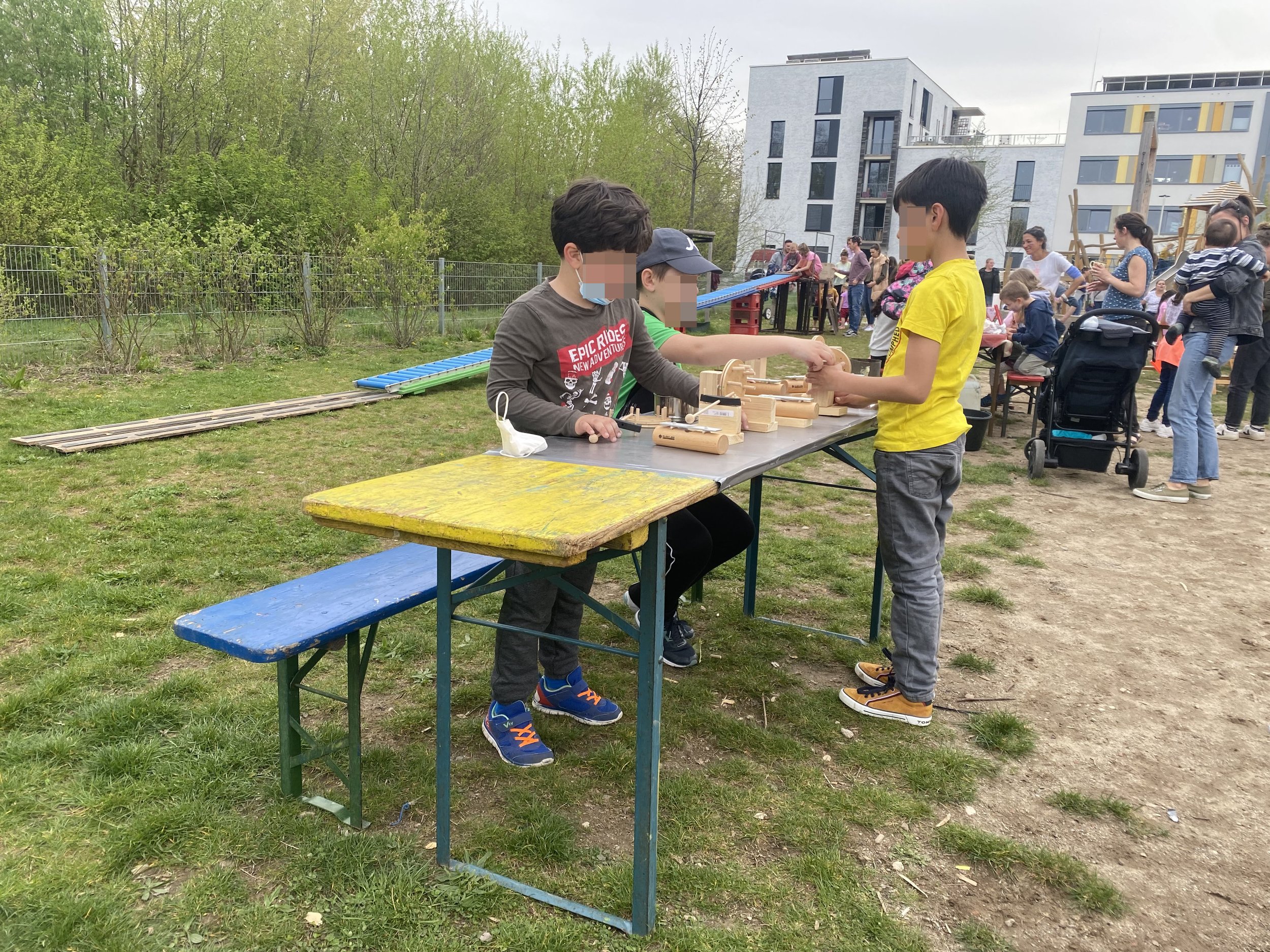Motorized Magnetic Music Machines
One of the ‘ufte’ experiments that I’m developing along with the team at the Exploratorium’s Tinkering Studio has the dual themes of sound and mechanisms. We’ve been trying to figure out a open-ended and playful way that learners can use automata-like machines to compose an analog soundscape.
This idea really started bouncing around in my head when I went to a cuckoo clock museum last summer near my house near the Black Forest of Germany. This little simple snail cam mechanism was so elegant and direct and I thought it would be beautiful to have a collection of sound makers that could connect in various ways. I imagined a shared table where people remix and recombine sound elements to make an infinite combination of sounds.
Some artists that inspired the early thinking about these experiments include the Brazilian group called O-grivo and Oakland based musicians and tinkerers Bodil and Larnie Fox. These machines lead us in interesting directions although the formats are super delicate for kids and adults to interact with at the museum. I was thrilled that another sound artist, Tom Fox from Vulpinstruments in the UK, agreed to join the project as an artist-in-residence to share ideas with me and the team.
We started by looking at the prototypes from the past couple of months made by the team during my Tinkering Studio residency. There were lots of good ideas like a more customizable ‘mighty rhythm king’ that Luigi was working on and a riff on Fire the Inventor’s ensemble automata kit. As we started working on the idea, we identified some core qualities of the experience that served as signposts for our design process.
First, we wanted to make sure that the machines actually sound good. That’s actually a pretty difficult thing to do for a museum setting. To meet that goal, we need to include things like making sure strikers spring back, having mallets made from the proper materials and choosing a complimentary set of instruments. As well, we wanted to make sure that learners are actually able to make and explore their own ideas and not just interact with something that we made.
Tom started off with a rotating cylinder and we wanted to experiment a bit more with motors so that the machines could have a consistent rhythm. First, Tom added a common yellow DAGU gearmotor into the system.
For my experiments, I used a continuous servo motor attached to a stand. One really cool innovation came thanks to my workshop-mate Claus who introduced me to a new material called moosgummi. This is a thick and dense rubber used for door/window insulation that’s about 2 cm square. We punched a hole through the center and used it as a adjustable, sturdy and springy mallet holder.
Initially I got interested in snail cams as a building block for the mechanism. I really like the surprise and intrigue of how this cam works so using a band-saw I cut out a few single and double cams.
Then Tom had another great development by the addition of magnets to the system. One of the challenges with tinkering with these discrete sound machines is that over time they get pushed out of alignment. So he added two neodymium magnets to the bottom of each block and created a metal surface for the table. As well he was inspired to use a magnet system to attach the cams to the motors. Using two magnets flipped in opposite directions created a stable but easily changeable system.
Over the following weeks we also explored other instruments that the machines could trigger. I got some bellows from cuckoo clock pipes and Tom tested out some stringed instruments that could be played with a bow action. It’s really fun to think through the limitless possibilities for a mechanical orchestra. As well although we abandoned the idea for another time we did some thinking about what it would be like to add piezo elements to the system.
We were inspired by one of my favorite museums in the world, the City Museum in St. Louis has an amazing DIY mechanical band. And of course the Mammoth Beat Organ modular, mechanical music contraption by Sam Underwood and Graham Dunning is essential viewing for ideas and mechanical musical inspiration.
As we went deeper down the rabbit hole of these customizable music machines, one problem that kept coming up was that the motors were too loud and distracted from the sounds made by the participants. I decided to try out a little gear motor that I had previously tried for the balancing sculptures project. It turned out to be quiet enough and I made a single motor block using that motor, a switch and a lipo battery pack all nested inside a piece of wood a la the EC light play lamps that the Tinkering Studio made.
Then I made one more change based on a suggestion that Tom shared with the TS team on the slack page. Instead of the snail cam I made a spinning disc with eight little holes for pegs to magnetically attach. Now these pegs could trigger a mallet or cuckoo mechanism in many different patterns.
Once you start to combine these elements, the workspace begins to quickly resemble the analog orchestra that we imagined at the beginning. Plus it’s really customizable and small changes make a big difference.
The day after I completed building all the elements, I brought a box of workshop parts to test with kids at a local Spielmobil action here in Freiburg. I tiled 5 sheets of stainless steel onto a normal folding table and set out the blocks and pegs.
It was really amazing to see the kids interacting with the parts. One of the things that I liked about the workshop was that it worked well either as a collaboration with each learner adding their own part to the system and also there were moments where one kid arranged the entire table to make their own soundscape.
As I was observing the participants building, I had a couple ideas that I would like to try in the coming days/weeks. One was that it seems to be helpful to make small adjustments to the height of the elements so I’d like to make simple blocks with magnets on the bottom and a metal sheet on the top. As well I want to cover the magnetic elements with vinyl so that there's no chance that they fall out when the interaction is unsupervised as swallowing these powerful magnets can be dangerous. And finally I noticed that some of the participants were figuring out ways to link the mallets and it would be cool to build some possibilities for those customizations and innovations into the designs.
I’m really excited this system for exploring music and mechanisms. I think that we’ll be able to develop a really fun and flexible system that blends art, science and engineering. And like the other uftes, hopefully it will just be a starting point that learners can use to get inspired to try more explorations and experiments. I hope to have a starting point set ready to test with colleagues at the Exploratorium in April and then continue to develop this new tinkerable experience in the coming weeks and months.
The LEGO Playful Learning Museum Network initiative is made possible through generous support from the LEGO Group.






